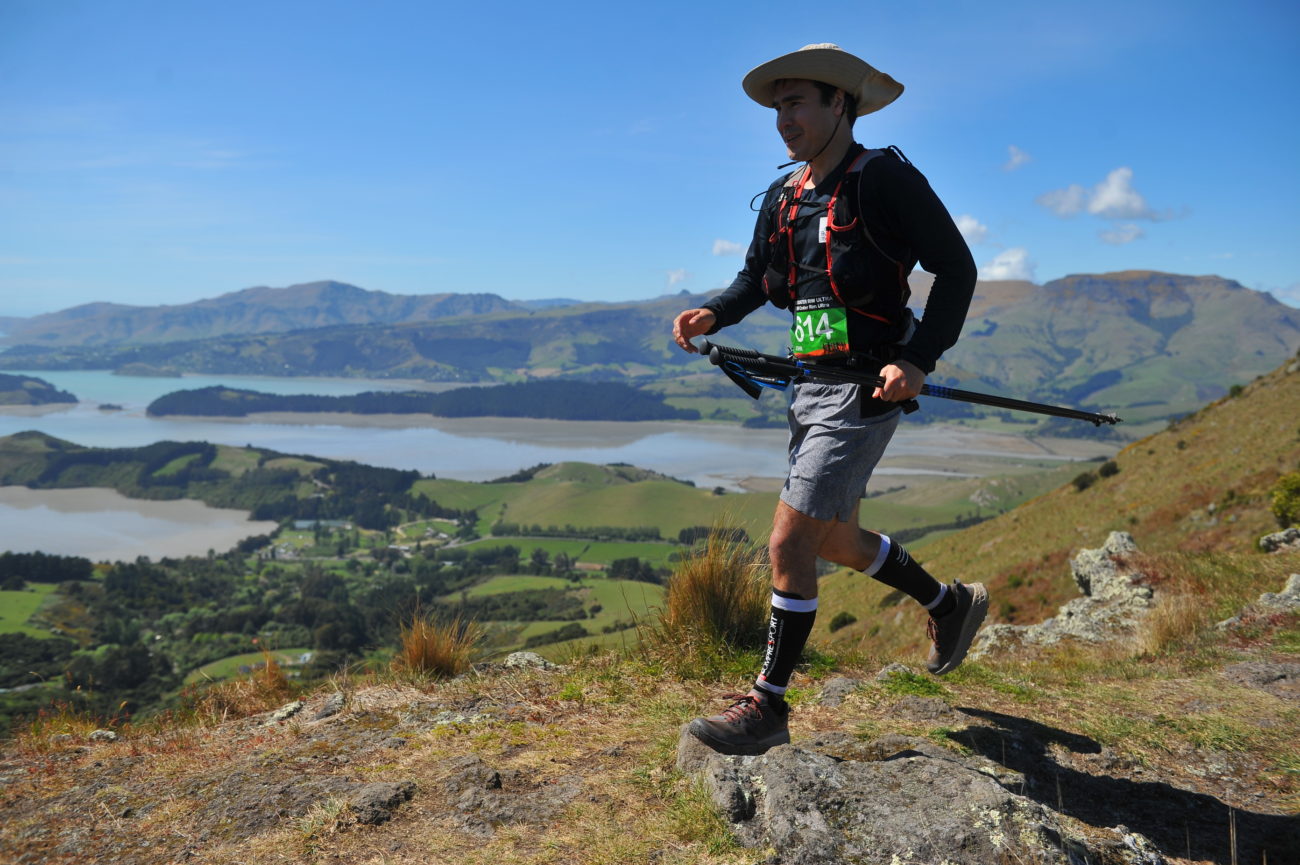
Crater Rim Ultra 53km 2020
Date:
October 18, 2020It’s an early 4.15am alarm for this year’s Crater Rim Ultra (53km). A quick shower and shave act as a pre-race ‘comfort primer’ and breakfast is hurriedly eaten in the car. I arrive at Hansen Park at 5.15am just in time to catch the bus to Lyttelton where the ferry waits. It’s a cool morning with light winds so we eagerly board the ferry where it’s warm and comfortable inside. The ride across is smooth and the gentle hum of the motor blends in with the nervous and excited chatter amongst groups. Once we arrive at Diamond Harbour, it’s a short walk up hill to the rugby club rooms. This year the organisers have thankfully opened up the club rooms and I manage to find a warm and quiet place inside. It’s not that often that you can continue to ‘comfort bank’ this close to the start. I appreciate the roof over my head, being able to sit on the soft carpet, the relative warmth of being indoors, and the relaxed ambience of the company around me. Every other day this wouldn’t have entered my conscious thought. But one tends to appreciate the simple comforts more preceding or following any period of sustained discomfort. And although I absolutely appreciate my comfortable home and work place, I know that too much of this also makes me stale. My soul thrives in the outdoors. Just after 7am we receive the call to attend the compulsory pre-race brief near the halfway mark of the rugby field. 180 ultra runners gather together forming a loose scrum at the start line. At the end of the brief, the race organiser reminds us, “Enjoy yourself, remember you paid for this!” There is mixed laughter. Although most ultra runners run for enjoyment, we all know at some point there will be adversity, discomfort, and pain. It’s all part and parcel of the sport. No pain, no gain.
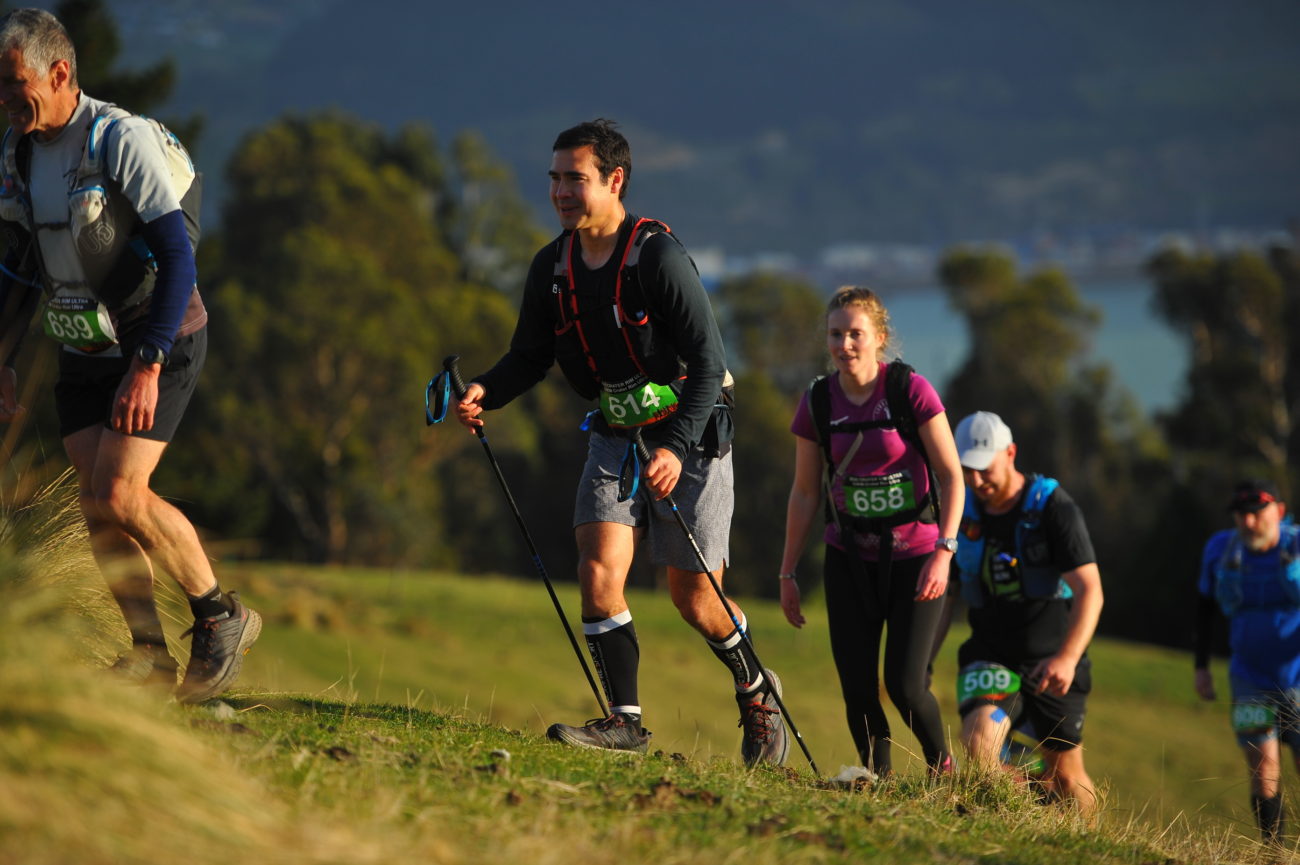
The joyful ascent up Mt Herbert
Pain is one of the most complex things I see every day. Our perception of pain is influenced by our upbringing, knowledge, fears, and emotions. As health professionals, it can be quite challenging to treat pain as it’s so individual and subjective. We all interpret and cope with pain differently so it gets really murky. What started as simple one way signalling from pain receptors in the periphery has expanded to include the importance of the brain in interpreting pain. The brain plays a crucial role in deciding what is relevant. To that effect, the brain decides what ‘signals’ to facilitate and what ‘signals’ to inhibit (i.e. descending pain inhibitory pathways). If the brain decides something else is more important, it can inhibit pain and prioritise other tasks. This explains how soldiers can be oblivious to battle field injuries as the importance of survival outweighs any ‘minor’ limb shrapnel injury. Contrastingly, fear of the unknown, stress, anxiety, and low mood can amplify your pain system. Our habitual activity profile in treating musculoskeletal pain conditions is also important. If you’re a sedentary individual then it can be counter intuitive to keep moving if movement is painful. If you understand and appreciate the benefits of exercise, then you’re more likely to keep moving despite the pain. Five important concepts to share are:
1) Not all pain equals tissue damage. Just because it’s sore, it doesn’t mean that it’s abnormal or a predictor of significant tissue damage. For example, headaches are common but are not often a sign of significant tissue damage. Contrastingly, one may bruise easily (which reflects tissue damage) though individuals may not even be aware of this or feel pain.
2) Most tissues heal/remodel over expected time frames. Skin heals over ‘days’, muscles over ‘weeks’, and tendons/joints/bone/nerves over ‘months’. Trust that your body has a remarkable ability to heal. If you’re still experiencing pain longer than expected tissue healing time frames, then something else is driving this. What other stressors are going on in your life? Have you developed an overprotective pain system (see below)?
3) Your pain system is an early warning system. I use the analogy that your pain system is like a guard dog. The problem is, the guard dog doesn’t think it’s doing anything wrong. It simply thinks it’s doing its job and protecting you. “Hey you injured your back last year while running and now you’re starting to run again. I’m a bit worried about this so I’m just going to bark. Great, you’ve stopped. Thanks for listening to me”.
4) Your pain system is plastic. Your pain fibres are made out of the same fibres as your brain so they have the ability to respond to repeated stimuli and remodel i.e. the longer you’ve been in pain, the better your body gets at being in pain. That’s a scary thought.
5) Load can be painful. To illustrate this, if you lift a 1kg weight above your head, it won’t be sore to begin with, but if you’re still holding it there 8 hours later, it’s going to be sore. Nothing’s been damaged. Nothing’s been injured. It illustrates the concept that load can be painful. Our neck, back, and knees etc absorb load all day. Load can be increased through age related / post injury deconditioning (e.g. weak muscles and stiff joints) and weight gain. These are all common post injury.
Taking the above into account, if you’re post injury and still experiencing pain greater than expected tissue healing timeframes (e.g. > 3-6 months), then there is a good possibility that you’ve developed an overprotective pain system i.e. a hypervigilant and overprotective guard dog who has become very good at doing its job. The problem is, your guard dog doesn’t think it’s doing anything wrong. It simply thinks it’s doing its job. As a result, you stop moving. It hurts so I should stop moving right? Although this is the desired outcome for your overprotective pain system, this is the worst possible outcome for you. It’s during this period where the ‘true enemies’ really prosper – post injury weakness, stiffness, and weight gain. This in turn increases the load onto already compromised tissue. This pain is further fuelled by the fear that any movement will create more damage. It’s a vicious cycle that’s difficult to break. However, it can be broken. It may take time but take heart in knowing that you can retrain your pain system. One approach is to ignore your pain. Yes, that’s right, ignore your pain. If you’re talking to your friendly neighbour and your guard dog is incessantly barking, how is this helpful? Don’t pay any credence to this unhelpful behaviour. An alternate approach is to work with your guard dog. Tell your guard dog “Thank you, I know what you’re trying to do, but I need to do X, Y, and Z in order to get better. Don’t worry, I’ve got this.” Do this often enough and most guard dogs eventually get the message. Injury aside, if you’re aging and have ‘let yourself go’ and everyday activities or low demand activities are now becoming painful, is this because you’re deconditioned and unable to tolerate the loads you previously tolerated? Do you need to move more rather than move less? We live in a society where we are over sensitised to comfort. We live in a society where pain is no longer tolerated and all pain is abnormal. Amongst the haze we have lost the once valued mantra of “no pain, no gain”. I reminisce back to my basic military training where our corporals and sergeants took great pleasure in telling us that ‘pain was weakness leaving the body’. If we were sore, then we were told to take a concrete pill. By the end of my first week, I could barely straighten my arms from doing so many press ups to rid my body of all this ‘weakness’ whilst also being severely constipated from all the concrete pills I had taken. Maybe there was a method to all this madness. A colleague of mine who grew up and practised medicine in Uganda before moving to NZ tells me ‘we have forgotten how to suffer’. Maybe this is what ultra runners are subconsciously doing every weekend. Conditioning our bodies to discomfort. Remembering what it’s like to suffer again. Running to escape from our excessive comfort.
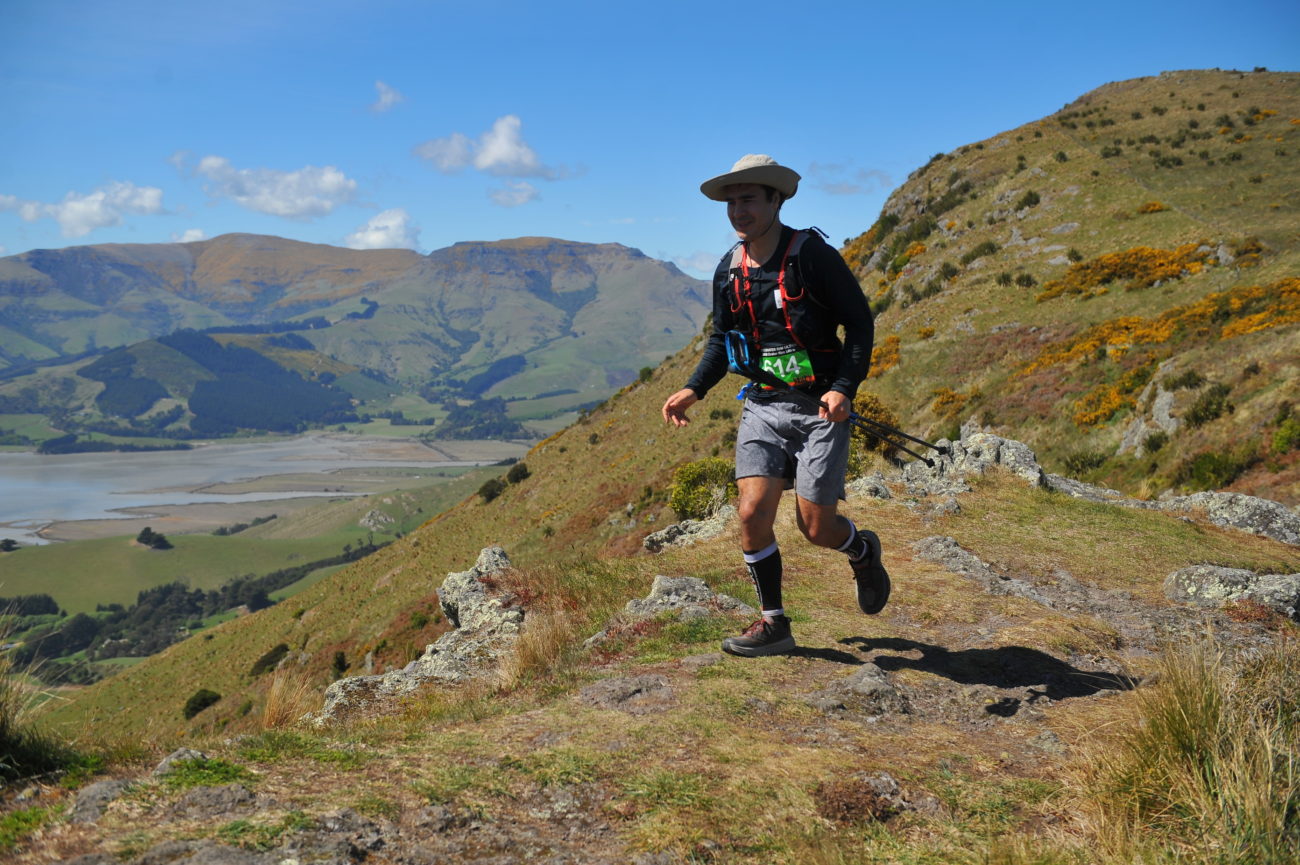
Moving along the Crater Rim trail
Heading up Mt Herbert is challenging (920m) but enjoyable to begin with as I’m still surrounded by the positive energy from other competitors. It’s a cloudless sky and the sun is warm and forgiving. Track conditions are also perfect so one can afford to relax and take in the harbour and coastal views around Mt Herbert and towards Packhorse Hut. There’s a light cool breeze so it’s all pretty smooth sailing along the pine forests towards Gebbie’s Pass. However, as expected, things start to get hard from about 20km onwards. Smooth sailing doesn’t last forever. Joy and comfort soon turn into discomfort and deep introversion. The trial by discomfort begins with a testing ascent up ‘the bastard’ (which as the name implies, doesn’t garner much affection or fondness). Moving over rocks and under vines towards the Sign of the Bellbird offers some reprieve from the uphill, but softens the legs up in the process. The descent down Worsley Spur towards the Adventure Park and back up the aptly named “Uphill Track” is when things start to unravel a bit. The sun is at its peak and it all gets a bit hot and heavy (minus the seduction). Before long, I’m light headed and well and truly in Ultra-Land. An ultra-runner’s equivalent of Disneyland minus the joy. I manage to labour towards the Sign of the Kiwi aid station (40km mark) and stay a while to implement some damage control. I ingest a combination of glucose and caffeine which helps to lift the mind fog. Once hydrated and nourished, there can be no other excuses. It’s time to channel Billy Ocean – When the going gets tough, the tough get going! No point standing still and feeling sorry for yourself. Best to get moving and finish! The last 13km is pure mind over muscle. No pain, no gain. Pushing through discomfort. Just before 3.30pm, the trial by discomfort ends and I cross the finish line in 8 hours and 7 mins. Often the best pain relief is the finish line. For the next few days, I’m a bit sore. I’m a bit stiff. I have to learn to bite my bottom lip when my patients tell me how sore they are following their activities of daily living. I don’t like discomfort. But I believe that I need to intermittently experience discomfort to really appreciate the comfort around me. Running keeps me grounded in that respect. I know that exercise isn’t easy but at some point, it actually needs to be hard. When exercise is no longer hard, guess what invariably becomes hard? Life. Sometimes there will be a requirement to push through pain. Seek guidance if you’re in doubt. Knowledge is pain relief. Not all pain equals tissue damage. Not all pain is abnormal. Exercise is medicine. Join me at my next blog, the Valley Ultra in mid-November.
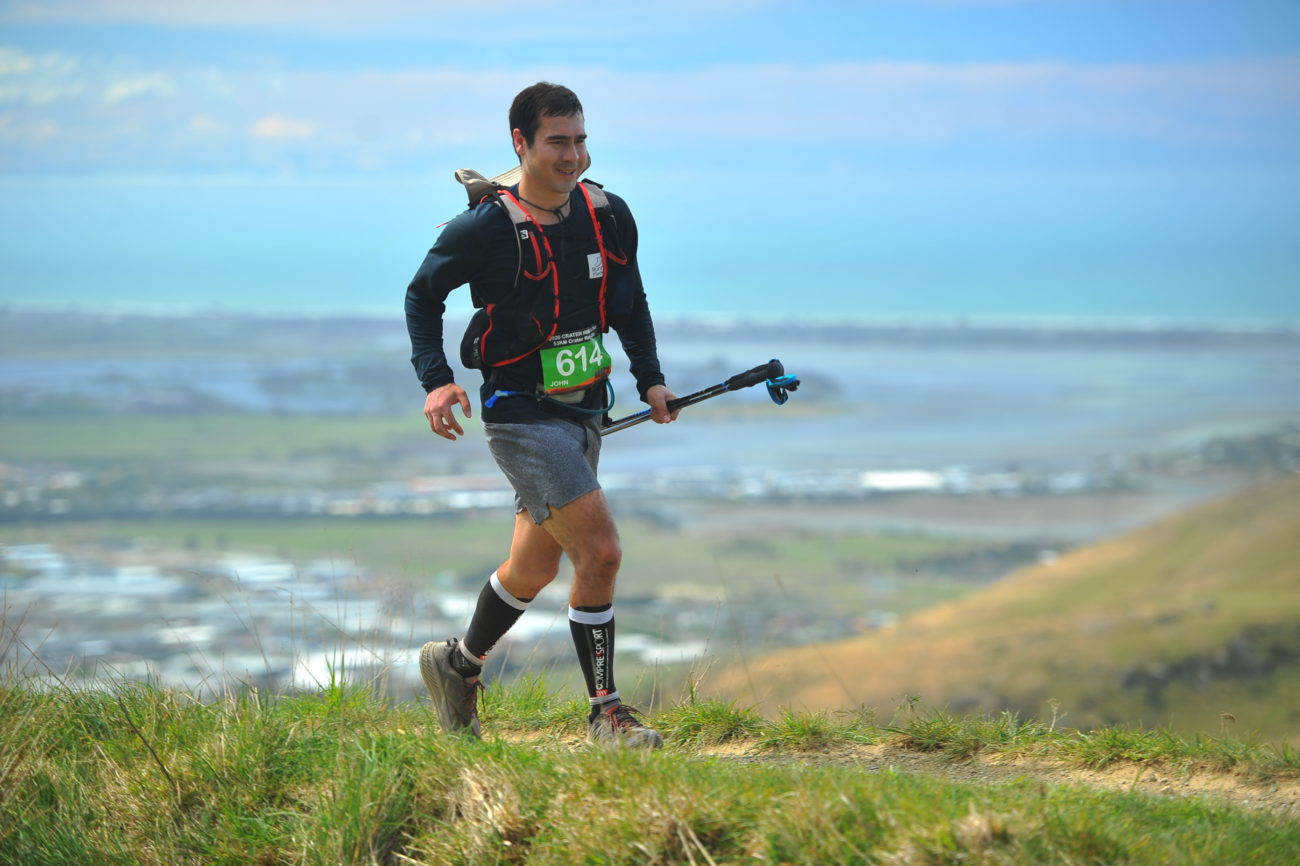
Christchurch beaches to the east
Helpful tip
Knowledge is pain relief. Not all pain equals tissue damage. Not all pain is abnormal.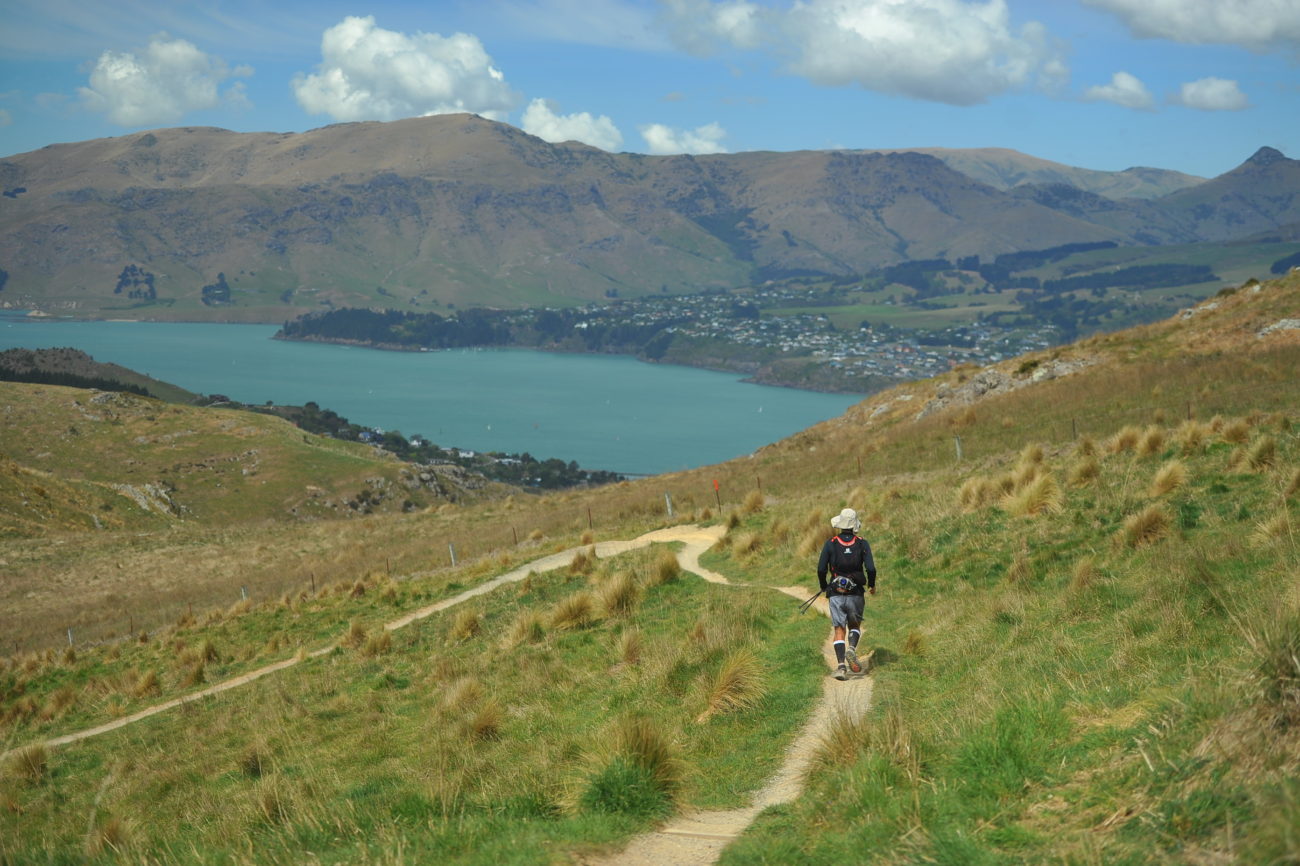
Homeward bound
